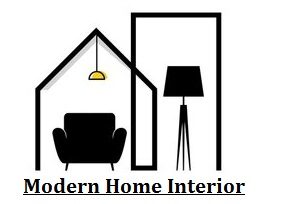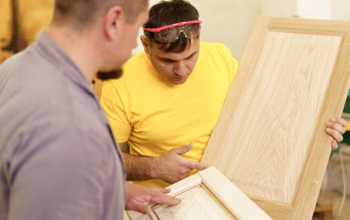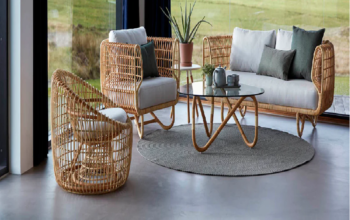Opening a restaurant is an exciting journey. From designing the menu to selecting the right location, every decision matters. But one of the most overlooked yet crucial decisions is choosing the right restaurant furniture. The furniture you pick plays a huge role in your restaurant’s comfort, style, and overall atmosphere.
In this blog, we will explore the most common mistakes restaurant owners make when selecting furniture and how to avoid them. This will help you save time, money, and future regrets.
1. Ignoring Your Restaurant’s Theme and Brand
One of the biggest mistakes people make is buying furniture that doesn’t match their restaurant’s theme or brand. Your furniture should reflect the personality of your restaurant.
What to Do:
- First, decide the style of your restaurant: Is it modern, vintage, industrial, rustic, or luxurious?
- Choose colors, materials, and designs that fit this style.
- Ensure the furniture blends well with other interior elements like walls, lighting, and flooring.
Example: A cozy café with wooden walls and warm lighting should not have neon-colored plastic chairs. That would create a confusing and unpleasant experience for guests.
2. Choosing Style Over Comfort
It’s easy to fall in love with stylish furniture, but if it’s not comfortable, your customers won’t enjoy sitting on it. This can reduce the time they spend in your restaurant and affect repeat visits.
What to Do:
- Always test the furniture before buying. Sit on the chairs and couches yourself.
- Ask for customer feedback on comfort during the first few weeks of operation.
- Balance both design and ergonomics when making your selection.
3. Buying Cheap, Low-Quality Furniture
We get it—starting a restaurant is expensive. But trying to save money by purchasing low-quality furniture often backfires. Cheap furniture tends to break easily, lose color, or become unstable after a short time.
What to Do:
- Invest in quality materials like hardwood, stainless steel, or commercial-grade upholstery.
- Look for warranties or durability certifications from manufacturers.
- Consider your furniture as a long-term investment rather than a short-term expense.
4. Not Measuring Your Space Correctly
Another common mistake is buying furniture that doesn’t fit the restaurant space well. Furniture that’s too big will make the place feel crowded. Furniture that’s too small will make it look empty.
What to Do:
- Measure your floor area carefully.
- Create a layout or floor plan to visualize how many tables and chairs you can fit.
- Leave enough space between tables for movement and privacy (at least 18–24 inches).
5. Overlooking Functionality and Flexibility
Many restaurant owners forget to consider how flexible their furniture is. What if you want to rearrange your seating for a special event or add outdoor dining?
What to Do:
- Choose stackable or foldable chairs for easy storage.
- Use modular tables that can be joined together or separated.
- Consider lightweight furniture that is easy to move around without scratching the floor.
6. Forgetting About Maintenance
Restaurant furniture is used daily and can get dirty quickly. Some materials are hard to clean and maintain, which could cost more in the long run.
What to Do:
- Choose stain-resistant and water-resistant fabrics for seating.
- Use tabletops that are easy to wipe down and don’t absorb liquids.
- Avoid furniture with complicated designs that collect dust or food crumbs.
7. Not Thinking About Target Customers
Different restaurants serve different types of customers, and your furniture should reflect their needs.
What to Do:
- If you run a family restaurant, include high chairs or booster seats.
- A fine dining restaurant may need plush, upholstered chairs.
- For a fast-food joint, go for durable and easy-to-clean materials.
8. Ignoring Outdoor Furniture Needs
If your restaurant has an outdoor area, you need furniture specifically designed for outdoor use. Using indoor furniture outside will lead to damage from rain, sun, and wind.
What to Do:
- Use weatherproof materials like treated wood, aluminum, or plastic composites.
- Make sure cushions are waterproof or easy to store indoors.
- Secure lightweight furniture to prevent it from moving in the wind.
9. Not Working with Trusted Suppliers
Choosing the right furniture supplier is just as important as choosing the furniture itself. Some suppliers may deliver low-quality goods or fail to meet deadlines.
What to Do:
- Work with experienced and reputable Restaurant Furniture Manufacturers who specialize in commercial setups.
- Check online reviews and ask for client references.
- Visit their showroom or ask for product samples before placing a bulk order.
10. Not Planning for the Future
Your restaurant may evolve over time. You might want to renovate, expand, or rebrand. If your furniture can’t adapt to these changes, you may have to spend more on replacing it.
What to Do:
- Choose neutral furniture colors and designs that can match various themes.
- Invest in pieces that can be reused or reupholstered easily.
- Think long-term: How will this furniture hold up in 2, 5, or 10 years
Bonus Tip: Learn from Hotel Furniture Strategies
Interestingly, Hotel Furniture Manufacturers often focus on durability, comfort, and multi-functionality—features that can benefit restaurants too. Looking at hotel furniture designs can give you ideas for optimizing space and creating a better guest experience.
Final Thoughts
Your restaurant’s furniture does more than just provide a place to sit. It shapes your brand, affects customer satisfaction, and influences your overall success. By avoiding these common mistakes and choosing wisely, you can create a welcoming environment that keeps guests coming back for more.
So take your time, plan ahead, and always aim for a balance between style, comfort, and function. Your furniture is not just part of your restaurant—it’s part of your story.




